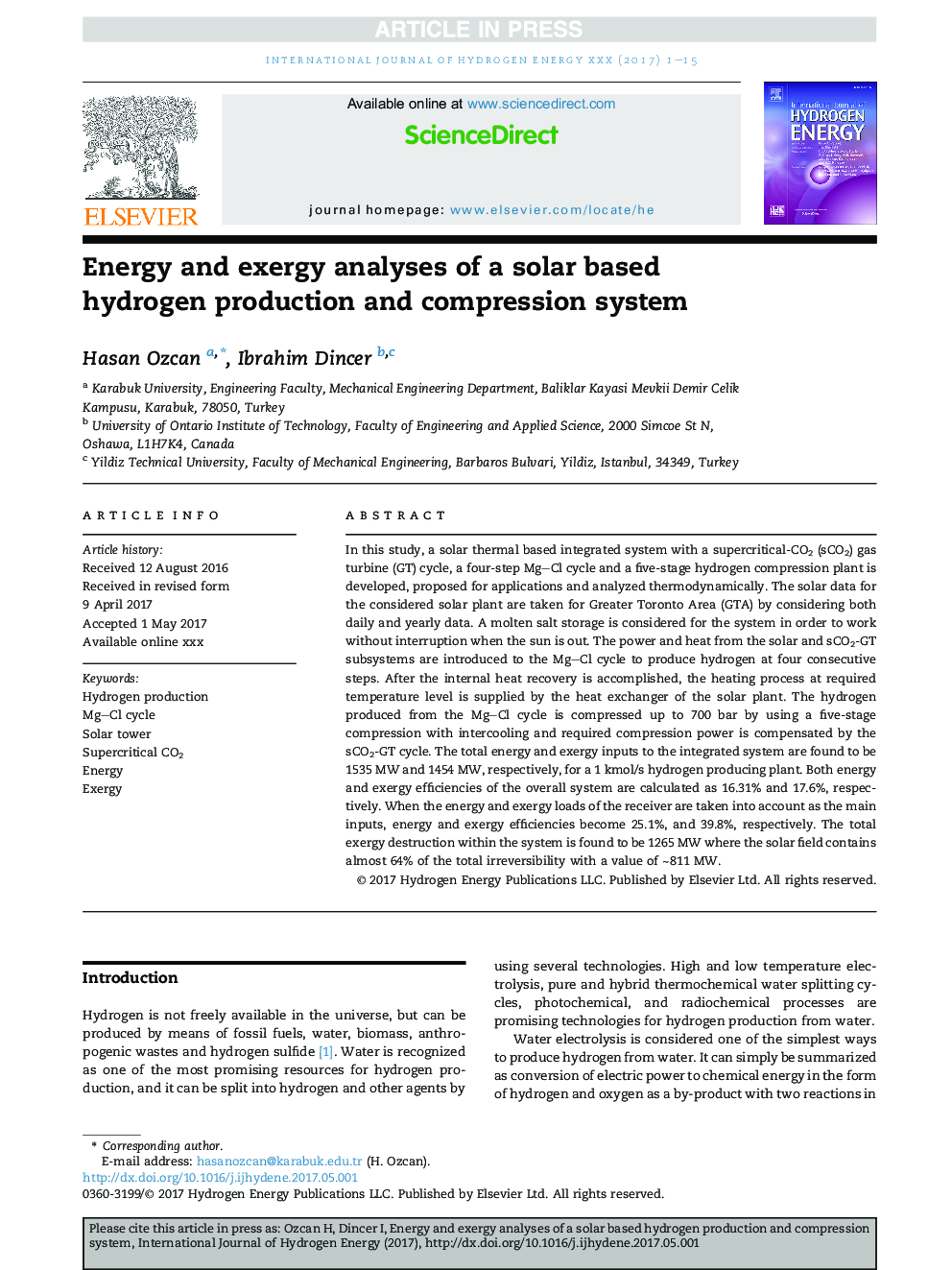| Article ID | Journal | Published Year | Pages | File Type |
|---|---|---|---|---|
| 5145996 | International Journal of Hydrogen Energy | 2017 | 15 Pages |
Abstract
In this study, a solar thermal based integrated system with a supercritical-CO2 (sCO2) gas turbine (GT) cycle, a four-step Mg-Cl cycle and a five-stage hydrogen compression plant is developed, proposed for applications and analyzed thermodynamically. The solar data for the considered solar plant are taken for Greater Toronto Area (GTA) by considering both daily and yearly data. A molten salt storage is considered for the system in order to work without interruption when the sun is out. The power and heat from the solar and sCO2-GT subsystems are introduced to the Mg-Cl cycle to produce hydrogen at four consecutive steps. After the internal heat recovery is accomplished, the heating process at required temperature level is supplied by the heat exchanger of the solar plant. The hydrogen produced from the Mg-Cl cycle is compressed up to 700 bar by using a five-stage compression with intercooling and required compression power is compensated by the sCO2-GT cycle. The total energy and exergy inputs to the integrated system are found to be 1535Â MW and 1454Â MW, respectively, for a 1Â kmol/s hydrogen producing plant. Both energy and exergy efficiencies of the overall system are calculated as 16.31% and 17.6%, respectively. When the energy and exergy loads of the receiver are taken into account as the main inputs, energy and exergy efficiencies become 25.1%, and 39.8%, respectively. The total exergy destruction within the system is found to be 1265Â MW where the solar field contains almost 64% of the total irreversibility with a value of â¼811Â MW.
Related Topics
Physical Sciences and Engineering
Chemistry
Electrochemistry
Authors
Hasan Ozcan, Ibrahim Dincer,
